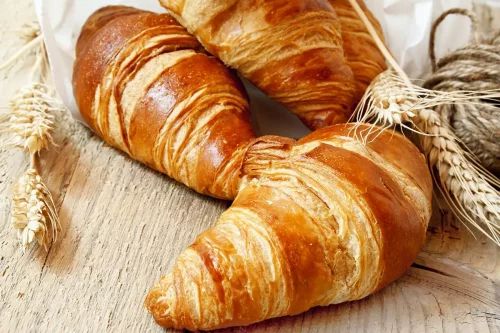Manitoba flour is increasingly found on our tables, but few people know its history and origins. Let's discover them together.
Manitoba flour: the origins
Manitoba flour is a flour that takes its name from the first area of production: Manitoba, a vast province in Canada, which, in turn, takes its name from the spirit that governs human life and the universe according to the ancient indigenous tribes of North America, Manitou.
Its starting species is Triticum aestivum, that is, common soft wheat, which has evolved to become resistant to the very low temperatures of that area, developing a high gluten content. In fact, gluten, along with other proteins in wheat, protects the seed when it falls from the plant and must sprout to form a new one.
Today, because of its characteristics, Manitoba flour no longer comes only from the region of the same name; in fact, the name is conventionally used to refer to all the strongest flours on the market.
Its starting species is Triticum aestivum, that is, common soft wheat, which has evolved to become resistant to the very low temperatures of that area, developing a high gluten content. In fact, gluten, along with other proteins in wheat, protects the seed when it falls from the plant and must sprout to form a new one.
Today, because of its characteristics, Manitoba flour no longer comes only from the region of the same name; in fact, the name is conventionally used to refer to all the strongest flours on the market.
Features
The main characteristic of Manitoba flour is its strength (W), so much so that it is the strongest flour we can currently find on the market. The strength of flour is given by the amount of gluten it can develop and its ability to absorb water and is measured with Chopin's alveograph: the higher the value, the stronger the flour. A weak flour, for example, has a W value of less than 170 while Manitoba has a W value of more than 350.
The insoluble proteins in Manitoba flour (glutenin and gliadin) when in contact with a liquid in the kneading stage produce gluten, which forms a tenacious network that can retain the gases of leavening and starches that would make the dough sticky.
These characteristics make Manitoba flour particularly suitable for the production of long leavening products, which are well leavened, fluffy and more digestible.
In terms of nutritional properties, on the other hand, Manitoba flour is very similar to other wheat flours, except for the different amount of protein, which can be up to 6-7% higher. Carbohydrates, on the other hand, are slightly lower (max 3% less), while fat and fiber are equivalent.
The insoluble proteins in Manitoba flour (glutenin and gliadin) when in contact with a liquid in the kneading stage produce gluten, which forms a tenacious network that can retain the gases of leavening and starches that would make the dough sticky.
These characteristics make Manitoba flour particularly suitable for the production of long leavening products, which are well leavened, fluffy and more digestible.
In terms of nutritional properties, on the other hand, Manitoba flour is very similar to other wheat flours, except for the different amount of protein, which can be up to 6-7% higher. Carbohydrates, on the other hand, are slightly lower (max 3% less), while fat and fiber are equivalent.
Uses in cooking
Because of its strength and elasticity, Manitoba flour is excellent for making special breads (French baguette and pan brioche), panettone, pandoro, and brioches, long-rising pizza, Easter cheesecakes, and special pastries. It is also used as a base for the preparation of Seitan, a food widely found in vegetarian and vegan diets as a source of protein. Abroad it is also used in the egg pasta industry, while in Italy it is not possible because by law pasta intended for domestic consumption (except for fresh pasta) can only be made from durum wheat.
Manitoba flour also is often used to “cut” other flours, thereby increasing the total W coefficient of the flour.
Manitoba flour also is often used to “cut” other flours, thereby increasing the total W coefficient of the flour.
